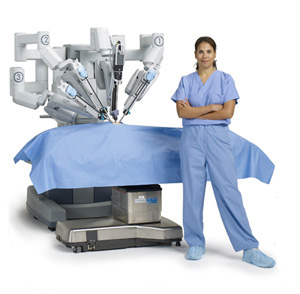In earlier blogs we have looked at the evolution of robots and artificial intelligence. In this blog we’ll tackle the subject from the perspective of advances in biomedicine. Why are we humans developing robots for biomedical use? Because robots when properly designed are masters of precision and process, seldom making errors. That is why robots dominate assembly line manufacturing today. But can you compare surgical procedures on people to manufacturing automobiles? Or can you replace the heart with an electro-mechanical device that delivers the same reliability as a healthy muscle? Apparently yes to the former and maybe to the latter.
So where are robots and robotic devices making an impact on biomedicine in the second decade of the 21st century? And where are we going with this type of technology as the century unfolds?
We have already described implantable sensors and devices as well as intelligent prosthetics in a previous blog. In this discussion divided into 5 sections we will look at the following:
- Surgical and Diagnostic Robotic Systems
- Imaging and Irradiation Systems
- Insertion Systems
- Robot Delivery and Rescue Systems
- Exoskeletons
Surgical and Diagnostic Robotic Systems
In the last 20 years we have seen the evolution of remote presence technology giving doctors the ability to provide medical help to patients in remote areas of the world. These technologies have proven useful for creating virtual presence for interviewing, patient screening and diagnosis, and medical consultation. One such device is called RP-7, a robot that looks like it came right out of a sci-fi. RP stands for remote presence and gives physicians the ability to see and speak with patients and hospital staff. Through its interface the RP-7 gives a doctor the ability to use electronic stethoscopes, otoscopes and ultrasound and receive transmission of all medical data.

But diagnostic robotic tools like RP-7 are just the beginning. A number of robotic designers have built or are building surgical robots with dexterity that is equal to if not better than the best surgeon. These systems feature 3 or 4 arms, stereoscopic 3D imaging and dexterity that no human surgeon can match. Why is there such a growing interest in these types of devices? Because robotic surgeons increase accuracy, decrease operating times, lead to shorter hospital stays, and produce fewer complications.
Here is a quick history of some of these devices beginning in the 1990s and ending in 2012.
Aesop
Computer Motion, out of Santa Barbara, California, was the creator of Aesop a surgical-assist robot built in the 1990s. The acronym Aesop does not have Greek-authored roots but rather stands for Automated Endoscopic System for Optimal Positioning. Developed to assist surgeons for endoscopies, NASA hoped to use Aesop in space where its better than human dexterity made it highly useful for doing repairs. Aesop was voice-command controlled, much preferred over eye or head-tracking motion control for operating room procedures.
Zeus
This robotic device was a second generation successor to Aesop and was first demonstrated in laboratory studies in 1995. It allowed surgeons to do minimally invasive complex procedures through incisions smaller than the diameter of a pencil. The company that created Zeus eventually merged with the creator of the next system featured in this blog.
da Vinci
Intuitive Systems of Sunnyvale, California, after its merger with Computer Motion, developed a robotic-assisted minimally invasive surgical system called da Vinci(R). Pictured below this robot first received FDA approval in 2000. It features a surgical console with 3D high-resolution magnified viewing connected to 4 interactive highly flexible robotic arms that can be manipulated to perform operations.

Each robotic arm features EndoWrist instruments with a range of motion far greater than a human hand. For many surgeons hand tremors can be a career ending problem but with da Vinci tremors are dramatically lessened with the robotic arms providing enhanced dexterity.
Amadeus
Titan Medical, out of Toronto, Canada, is in the process of developing Amadeus(R), a robotic surgical system designed for remote access surgical procedures. Amadeus gives surgeons the ability to do procedures from anywhere, whether in the operating room or on the other side of the globe. Amadeus lets the surgeon feel the patient through touch feedback technology. Several models are under development with one specifically designed to perform surgery in confined spaces where a surgeon would find it impossible to access the patient.
The Near Future for Surgical Robots
Surgeons have two hands. When more are needed two or more surgeons get involved in an operation. Medical robots are not so limited and more arms means more tools can be brought to bear during a procedure with fewer surgeons needed to operate them. Robotic arms can feature touch feedback systems that provide tactile and pressure sensation to the surgical operator. Robotic arms can be generalists or specialists. One can control a 3D camera that can maneuver in the surgical site providing better than human vision while others can use multiple attached instruments to help a surgeon complete a procedure faster minimizing trauma to the patient. Robotic arms and fingers can be smaller than any human’s arms and fingers. Robotic surgeons can be autonomous entering a body, guided remotely to a surgical site, doing the repair and then exiting.
Are we there yet? Are we near the time when robots will do procedures autonomously without the presence of a surgeon? Not yet but ultimately that is where the technology is headed in the 21st century.








